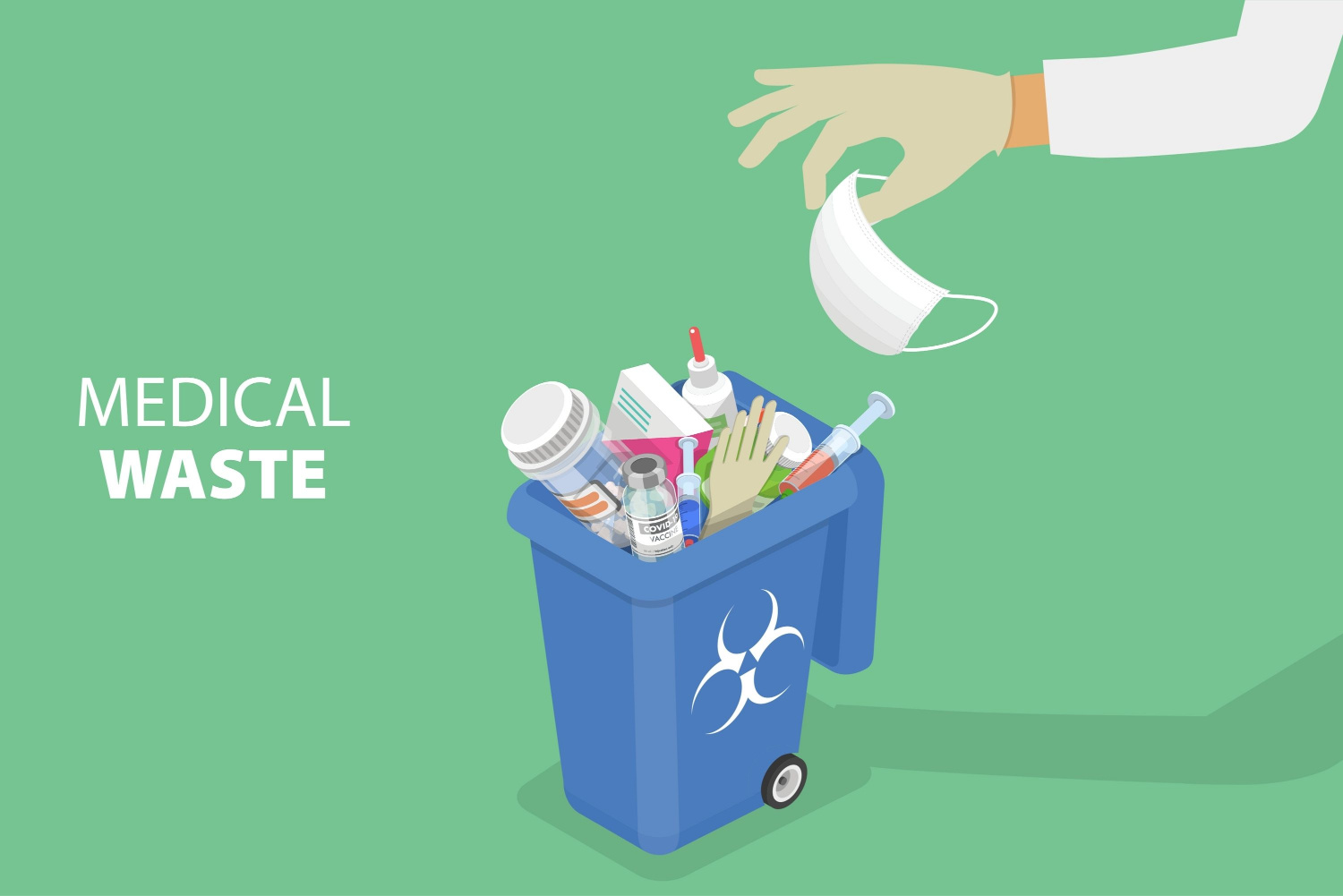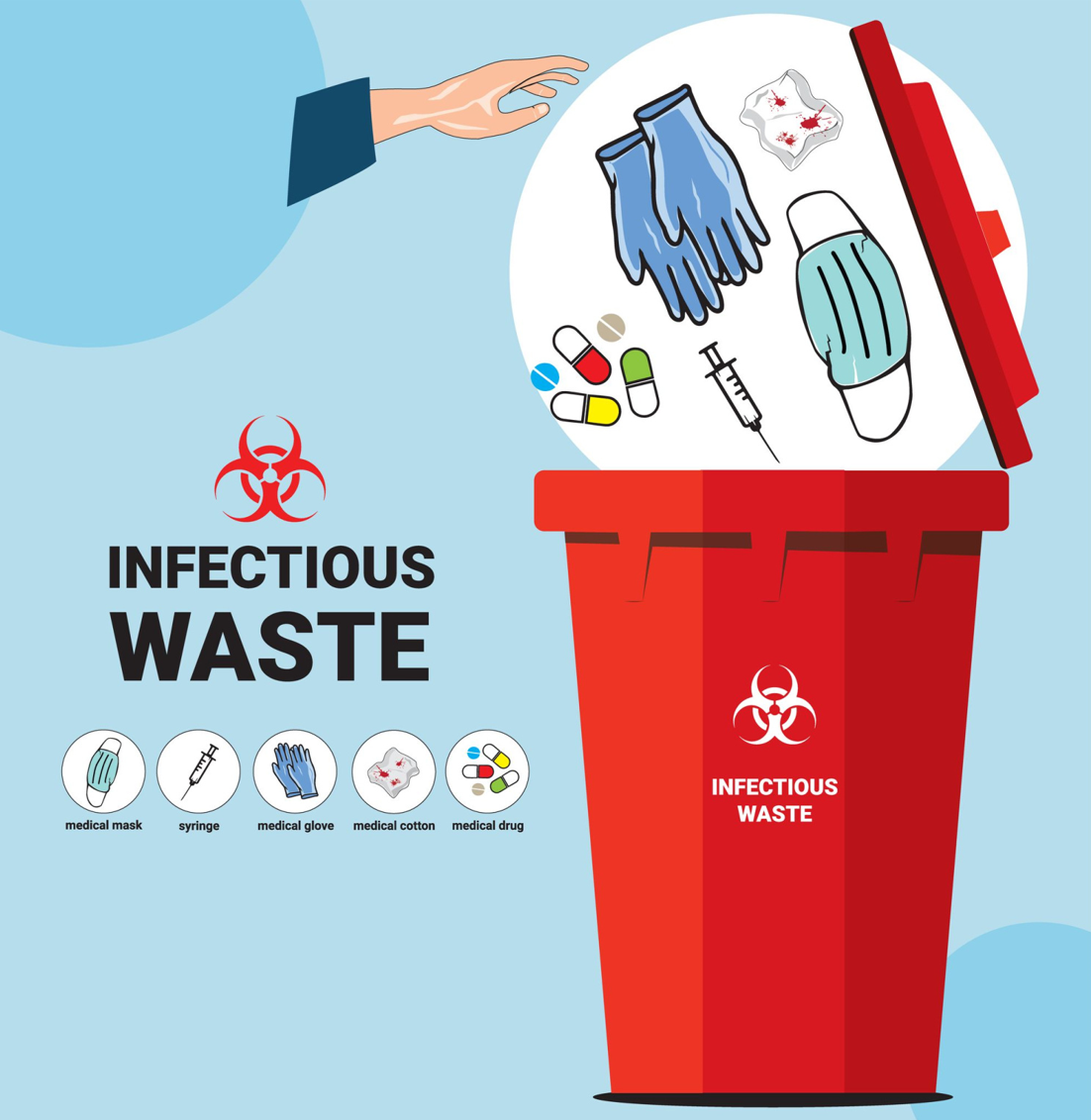Sustainable Solutions for Medical Garbage Disposal
The appropriate monitoring and disposal of medical waste is crucial in maintaining a sustainable and secure healthcare system. As the quantity of clinical waste remains to climb, discovering sustainable services becomes increasingly important. This necessitates the fostering of efficient and ecologically friendly techniques for disposing of clinical waste. This intro will discover numerous sustainable solutions for medical waste disposal, including waste segregation and sorting, on-site waste therapy systems, recycling and reuse programs, waste-to-energy conversion technologies, as well as cooperation and education and learning initiatives. By applying these options, healthcare centers can not only minimize the ecological impact of clinical waste, however also make certain the security of healthcare workers and the general public.
Waste Partition and Arranging
The procedure of waste partition and sorting is essential in ensuring appropriate monitoring and disposal of clinical waste. Clinical waste is categorized into various classifications based on its possible threat to human health and wellness and the setting. Appropriate partition and sorting of waste help to decrease the risk of contamination and make sure that each type of waste is taken care of and taken care of properly.
The primary step in waste partition and sorting is to recognize and separate various sorts of clinical waste at the factor of generation. This entails acknowledging the numerous groups of waste, such as infectious waste, sharps waste, pharmaceutical waste, and chemical waste. medical waste disposal. Each classification calls for details handling and disposal methods to avoid damage to healthcare employees, individuals, and the setting

On-site Waste Therapy Equipments
Continuing from the previous subtopic on waste segregation and sorting, an effective remedy for lasting medical waste disposal is the implementation of on-site waste therapy systems - medical waste disposal. These systems permit medical care facilities to treat their medical waste on-site, lowering the requirement for transportation and disposal at off-site centers. On-site waste therapy systems usually include modern technologies such as autoclaves, microwave systems, or chemical disinfection units
Autoclaves, generally utilized in healthcare setups, use high-pressure vapor to disinfect and treat clinical waste. This process successfully kills microorganisms, viruses, and various other potentially harmful microbes, making the waste secure for additional handling and disposal. Microwave systems, on the other hand, usage microwave radiation to warm and treat the waste, attaining similar outcomes to autoclaves.
Chemical sanitation units include the usage of chemicals to sanitize and deal with medical waste. These systems can utilize different anti-bacterials, such as chlorine-based options, to counteract microorganisms and lower the risk of contamination. The treated waste can after that be safely disposed of in routine waste streams or undertake further treatment, such as shredding or incineration.
Implementing on-site waste therapy systems supplies a number of benefits. It lowers the ecological impact connected with transferring clinical waste to off-site facilities, decreasing carbon exhausts and the danger of mishaps during transport. Furthermore, it supplies healthcare facilities with more control over the treatment procedure, making certain compliance with policies and minimizing the possibility for unapproved accessibility to sensitive medical waste.
Recycling and Reuse Programs
To even more improve sustainable clinical garbage disposal techniques, medical care centers can apply recycling and reuse programs, building on the foundation of on-site waste treatment systems. Recycling and reuse programs provide an extra layer of environmental obligation by drawing away clinical waste from land fill and searching for alternative uses for sure products.
One secret facet of recycling and reuse programs is the segregation of waste at the resource. medical waste disposal. By implementing correct waste segregation procedures, medical care facilities can separate recyclable products, such as plastics, steels, and glass, from non-recyclable waste. This enables the reliable recycling of these products, reducing the requirement for virgin resources and decreasing the environmental influence of medical garbage disposal
Along with reusing, medical care centers can check out chances for reusing certain medical products. Single-use items like medical drapes and dress can be sterilized and reused, decreasing why not check here the requirement for new materials and decreasing waste generation. Multiple-use sharps containers can additionally be utilized, decreasing the amount of plastic waste created from non reusable containers.
Carrying out recycling and reuse programs needs proper infrastructure and training - WasteX Medical Waste Disposal. Medical care centers must purchase proper recycling containers, segregation systems, and sanitation devices, as well as make certain personnel are enlightened on appropriate waste management methods
Waste-to-Energy Conversion Technologies
One potential strategy to deal with medical garbage disposal sustainably is through the use of waste-to-energy conversion technologies. These modern technologies provide an encouraging service to the expanding problem of clinical waste, which poses substantial environmental and public health and wellness threats. Waste-to-energy conversion includes converting the organic parts of medical waste into power, such as heat or electrical energy, through different procedures like pyrolysis, gasification, and incineration.
Incineration is one of the most typically utilized waste-to-energy modern technology for medical waste disposal - WasteX Medical Waste Disposal. It involves the controlled combustion of waste at high temperature levels, transforming it right into ash, gases, and heat. This heat can be used to produce heavy steam, which can after that be exchanged power
Pyrolysis and gasification are more recent technologies that provide even more eco friendly alternatives to incineration. Pyrolysis involves heating up the waste in the lack of oxygen, resulting in the manufacturing of gases and char. Gasification, on the various other hand, transforms waste right into an artificial gas or "syngas" that can be made use of as a gas for power generation or various other commercial processes.
These waste-to-energy conversion innovations not only decrease the volume of medical waste however additionally provide a source of renewable resource. Additionally, they can help in reducing greenhouse gas emissions and reliance on nonrenewable fuel sources (WasteX Medical Waste Disposal). It is crucial to guarantee that these technologies are implemented with correct discharges control procedures to reduce any possible unfavorable impacts on air top quality and public health.
Collaboration and Education And Learning Initiatives
Cooperation amongst stakeholders in the healthcare sector is vital for executing lasting services for clinical waste disposal. In order to properly attend to the difficulties related to clinical waste monitoring, it is vital for health care centers, waste administration firms, regulators, and other pertinent parties to function together.

Furthermore, education initiatives play a vital role in promoting sustainable methods. Health care experts need to be knowledgeable about the environmental impact of improper waste monitoring and the relevance of applying lasting options. Educating programs and academic materials can help them understand the correct partition of waste, the usage of eco-friendly choices, and the advantages of waste-to-energy conversion modern technologies.
Partnership and education can also facilitate the growth of guidelines and guidelines for medical garbage disposal. By interacting, stakeholders can contribute to the production of detailed policies that make certain secure handling, transportation, and treatment of clinical waste.
Final Thought
To conclude, taking on lasting services for clinical waste disposal is important in order to minimize the adverse influence on the environment and public health and wellness. Waste segregation and sorting, on-site waste therapy systems, recycling and reuse programs, waste-to-energy conversion technologies, and cooperation and education campaigns are all crucial techniques to attain this goal. Applying these services calls for collaboration in between health care centers, waste administration companies, and government agencies, in addition to continuous education and learning and awareness projects.
The process of waste segregation and sorting is crucial in making sure proper administration and disposal of medical waste.The very first action in waste segregation and sorting is to determine and divide various types of clinical waste at the point of generation. This includes acknowledging the different groups of waste, such as infectious waste, sharps waste, pharmaceutical waste, and chemical waste.Proceeding from the previous subtopic on waste partition and sorting, a reliable service for sustainable clinical waste disposal is the execution of on-site waste treatment systems. The treated waste can after that be securely disposed of in regular waste streams or undergo additional therapy, such as shredding or incineration.